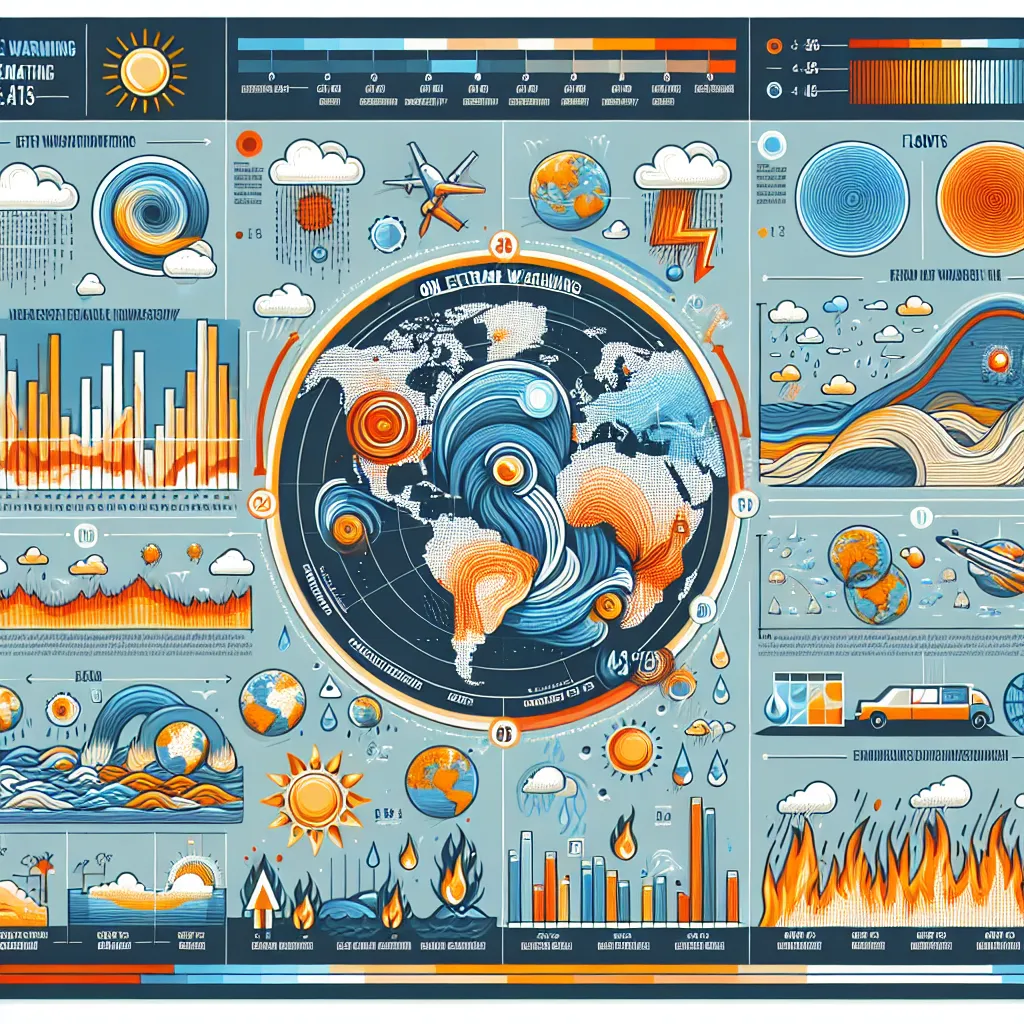As an experienced IELTS instructor, I understand the importance of practicing with relevant and challenging materials. Today, we’ll focus on a topic that has become increasingly prevalent in IELTS Reading tests: the effects of global warming on weather extremes. This subject not only tests your reading comprehension skills but also your understanding of a critical global issue.
Introduction to the Topic
The IELTS Reading section requires candidates to demonstrate their ability to understand complex texts, identify key information, and analyze the author’s opinions. The topic of global warming and its impact on weather patterns has been featured in several past IELTS exams, making it a crucial area for preparation.
Based on recent trends and the growing importance of climate change in global discourse, it’s highly likely that similar topics will continue to appear in future IELTS tests. Let’s dive into a practice reading passage that mirrors the style and difficulty level you might encounter in the actual exam.
 Effects of global warming on extreme weather
Effects of global warming on extreme weather
Practice Reading Passage
The Intensifying Impact of Global Warming on Weather Extremes
Climate change, primarily driven by human activities, is reshaping our planet’s weather patterns in profound and often alarming ways. As global temperatures continue to rise, scientists are observing a marked increase in the frequency and intensity of extreme weather events worldwide. This shift is not merely a matter of inconvenience; it poses significant challenges to ecosystems, economies, and human societies across the globe.
One of the most noticeable effects of global warming on weather extremes is the intensification of heatwaves. Regions that were once known for moderate climates are now experiencing record-breaking temperatures with increasing regularity. These prolonged periods of excessive heat not only pose direct health risks to vulnerable populations but also strain energy grids and water resources. Moreover, the rising temperatures exacerbate drought conditions in many areas, leading to crop failures, wildfires, and desertification.
Paradoxically, while some regions grapple with unprecedented dry spells, others are facing the opposite extreme: intensified rainfall and flooding. The warming atmosphere can hold more moisture, leading to heavier precipitation events when it does rain. This phenomenon has resulted in devastating floods in both urban and rural areas, causing widespread damage to infrastructure and agriculture. Coastal regions are particularly vulnerable, as rising sea levels compound the impact of storm surges and heavy rainfall.
The ocean’s role in weather extremes cannot be overstated. Warmer sea surface temperatures provide more energy to fuel tropical storms and hurricanes, potentially increasing their intensity and destructive power. While the relationship between global warming and hurricane frequency is still a subject of ongoing research, there is growing evidence that climate change is making these storms more dangerous when they do occur.
Furthermore, the changing climate is disrupting established weather patterns, leading to unseasonable conditions that can have far-reaching consequences. For instance, early spring thaws followed by late frosts can devastate agricultural crops, while unusually warm winters can disrupt the lifecycles of plants and animals, potentially leading to long-term ecological imbalances.
The impact of these weather extremes extends beyond the immediate physical damage. They pose significant challenges to global food security, water resources, and economic stability. Developing nations, often located in regions most vulnerable to climate change, bear a disproportionate burden of these impacts, exacerbating existing inequalities and potentially fueling social and political unrest.
Addressing the effects of global warming on weather extremes requires a multi-faceted approach. While mitigation efforts to reduce greenhouse gas emissions are crucial, adaptation strategies are equally important. These may include improving infrastructure resilience, developing early warning systems for extreme weather events, and implementing sustainable agricultural practices.
As our understanding of climate change and its impacts on weather patterns continues to evolve, it is clear that the relationship between global warming and weather extremes will remain a critical area of study and concern for decades to come. The challenges posed by these intensifying weather events underscore the urgent need for global cooperation and action to address climate change and its far-reaching consequences.
Reading Comprehension Questions
-
According to the passage, what is the primary driver of climate change?
A) Natural climate cycles
B) Human activities
C) Solar radiation
D) Volcanic eruptions -
Which of the following is NOT mentioned as an effect of intensified heatwaves?
A) Health risks to vulnerable populations
B) Strain on energy grids
C) Increased tourism in hot regions
D) Exacerbation of drought conditions -
The passage suggests that global warming leads to both drought and flooding. This is described as:
A) A contradiction
B) A paradox
C) An exaggeration
D) A misconception -
What role does the warming atmosphere play in increased rainfall?
A) It creates more clouds
B) It holds more moisture
C) It accelerates wind patterns
D) It cools the upper atmosphere -
According to the text, how does global warming potentially affect hurricanes?
A) It increases their frequency
B) It decreases their intensity
C) It may increase their intensity and destructive power
D) It has no effect on hurricanes -
Which group is said to be most affected by the impacts of weather extremes?
A) Developed nations
B) Coastal communities
C) Urban populations
D) Developing nations -
The passage mentions all of the following as consequences of weather extremes EXCEPT:
A) Challenges to food security
B) Water resource issues
C) Economic instability
D) Increased biodiversity -
What does the author suggest is needed to address the effects of global warming on weather extremes?
A) Focus solely on reducing greenhouse gas emissions
B) Implement only adaptation strategies
C) A combination of mitigation and adaptation strategies
D) Wait for more conclusive research -
The relationship between global warming and hurricane frequency is described as:
A) Definitively proven
B) Completely disproven
C) A subject of ongoing research
D) Irrelevant to climate change discussions -
Based on the passage, which of the following statements is true about the future of weather extremes?
A) Their impact will diminish over time
B) They will remain a critical area of study and concern
C) They will only affect certain regions of the world
D) Their effects can be easily mitigated with current technology
Answer Key and Explanations
-
B) Human activities
Explanation: The passage states, “Climate change, primarily driven by human activities, is reshaping our planet’s weather patterns.” -
C) Increased tourism in hot regions
Explanation: The passage mentions health risks, strain on energy grids, and exacerbation of drought conditions as effects of heatwaves, but does not mention increased tourism. -
B) A paradox
Explanation: The text uses the word “Paradoxically” to introduce the concept that some regions face drought while others face flooding. -
B) It holds more moisture
Explanation: The passage states, “The warming atmosphere can hold more moisture, leading to heavier precipitation events when it does rain.” -
C) It may increase their intensity and destructive power
Explanation: The text mentions, “Warmer sea surface temperatures provide more energy to fuel tropical storms and hurricanes, potentially increasing their intensity and destructive power.” -
D) Developing nations
Explanation: The passage states, “Developing nations, often located in regions most vulnerable to climate change, bear a disproportionate burden of these impacts.” -
D) Increased biodiversity
Explanation: The passage mentions challenges to food security, water resources, and economic stability as consequences of weather extremes, but does not mention increased biodiversity. -
C) A combination of mitigation and adaptation strategies
Explanation: The text states, “While mitigation efforts to reduce greenhouse gas emissions are crucial, adaptation strategies are equally important.” -
C) A subject of ongoing research
Explanation: The passage mentions, “While the relationship between global warming and hurricane frequency is still a subject of ongoing research.” -
B) They will remain a critical area of study and concern
Explanation: The concluding paragraph states, “The relationship between global warming and weather extremes will remain a critical area of study and concern for decades to come.”
Common Mistakes to Avoid
When tackling a complex passage like this in the IELTS Reading test, be aware of these common pitfalls:
-
Overlooking key qualifiers: Words like “may,” “potentially,” and “growing evidence” are crucial in scientific texts. They indicate the level of certainty about claims.
-
Confusing correlation with causation: The passage discusses relationships between global warming and weather events, but be careful not to assume direct causation where it’s not explicitly stated.
-
Generalizing specific examples: While the text provides examples of weather extremes, avoid applying these to all situations or regions unless the passage explicitly does so.
-
Misinterpreting paradoxes: The passage mentions seemingly contradictory effects (e.g., both drought and flooding). Recognize that complex phenomena can have diverse impacts.
-
Neglecting the broader context: While focusing on specific details, don’t lose sight of the overall message about the widespread impacts of climate change.
Key Vocabulary
- Climate change: Long-term alterations in temperature and typical weather patterns in a place.
- Global warming: The long-term heating of Earth’s climate system observed since the pre-industrial period.
- Weather extremes: Unusual, severe or unseasonal weather at the extremes of the historical distribution.
- Heatwave: A prolonged period of excessively hot weather.
- Drought: A prolonged period of abnormally low rainfall, leading to a shortage of water.
- Desertification: The process by which fertile land becomes desert.
- Storm surge: An abnormal rise of water generated by a storm, over and above the predicted astronomical tides.
- Mitigation: The action of reducing the severity, seriousness, or painfulness of something.
- Adaptation: The process of change by which an organism or species becomes better suited to its environment.
Grammar Focus
Pay attention to the use of conditional statements in discussing potential future scenarios. For example:
- “These prolonged periods of excessive heat not only pose direct health risks to vulnerable populations but also strain energy grids and water resources.”
This sentence uses the present simple tense to describe current and ongoing effects. It’s a common structure in scientific writing to describe established facts or regular occurrences.
Another important structure to note is the use of comparative forms to highlight changes:
- “Regions that were once known for moderate climates are now experiencing record-breaking temperatures with increasing regularity.”
This sentence compares past and present situations, using “once” to refer to the past and “now” for the present, along with the present continuous tense “are experiencing” to emphasize ongoing change.
Tips for Success
-
Practice active reading: As you read, mentally summarize each paragraph and identify the main idea.
-
Improve your vocabulary: Familiarize yourself with scientific and environmental terminology. This will help you understand complex texts more quickly.
-
Time management: In the actual test, you’ll have limited time. Practice reading and answering questions within time constraints.
-
Look for signal words: Words like “however,” “moreover,” and “furthermore” often introduce important points or contrasting ideas.
-
Don’t rely on prior knowledge: Base your answers solely on the information provided in the passage, even if you’re familiar with the topic.
-
Skim and scan effectively: Quick reading techniques can help you locate specific information faster.
-
Pay attention to paragraph structure: Often, the main idea is presented in the first or last sentence of a paragraph.
Remember, success in the IELTS Reading test comes with consistent practice and familiarity with various question types and topics. Keep challenging yourself with complex texts on diverse subjects to build your skills and confidence.
For more practice on related topics, you might find these articles helpful:
Good luck with your IELTS preparation!


